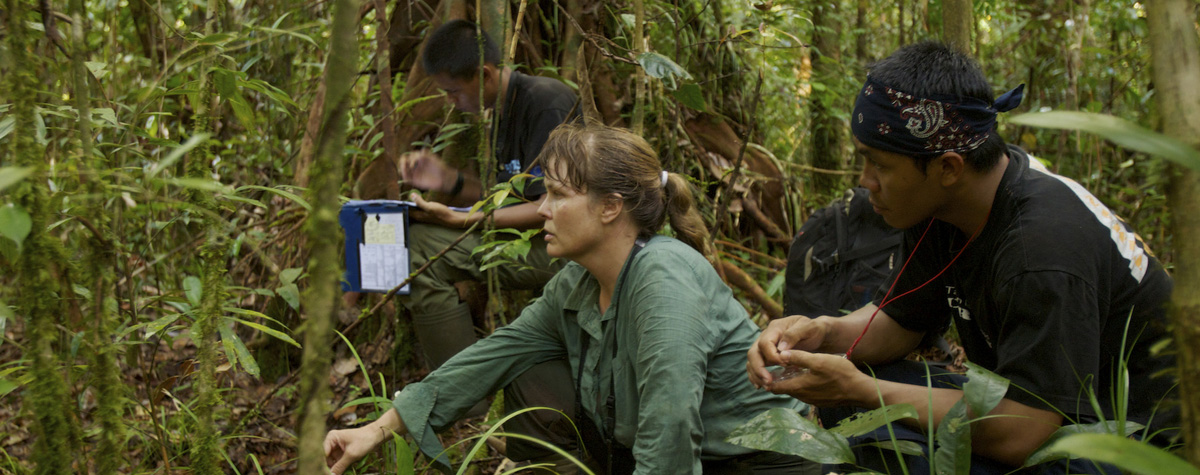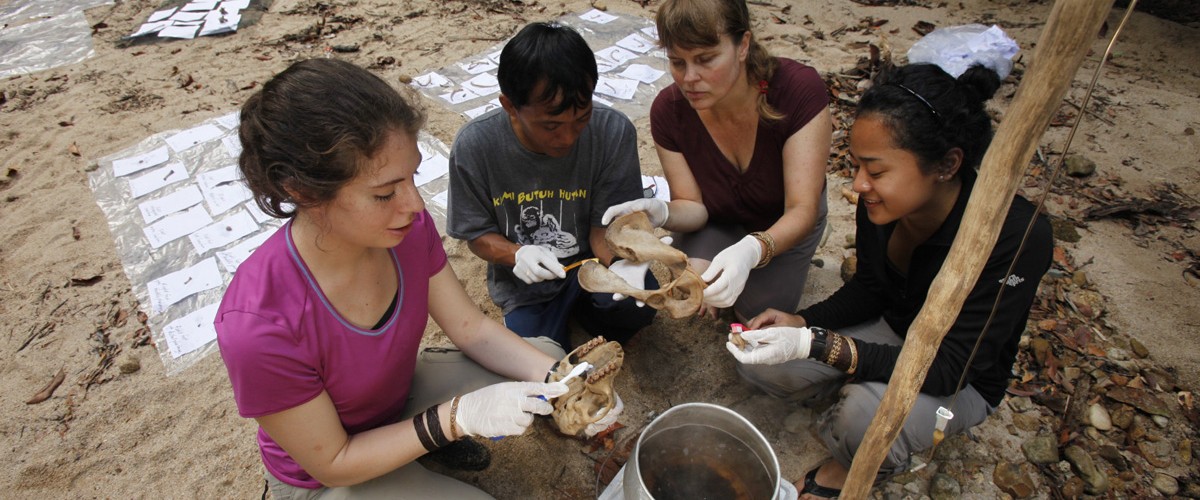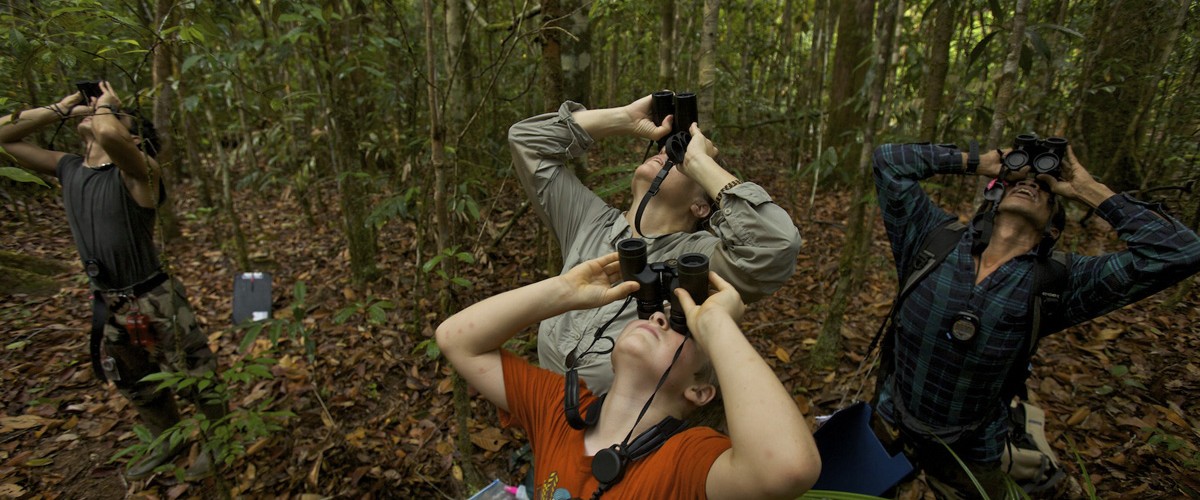By Gunawan Wibisono, Surveyor and Botanist
My name is Gunawan Wibisono and I am the newest staff member of Yayasan Palung/GPOCP. I originally come from a village called Pak Utan, in Toho District, Mempawah Regency in Kalimantan (Borneo). In 2015 I began studying Biology, in the Faculty of Mathematics and Natural Sciences at Tanjungpura University in Pontianak. I completed my degree in 2021, and then resided in Sintang and Kubu Raya districts. Since I started at YP/GPOCP in November 2022, I have been assisting with phenological surveys at Cabang Panti Research Station and the Rangkong River camp. Trained as a botanist, working for YP/GPOCP and helping with these observations has been a great experience for me.
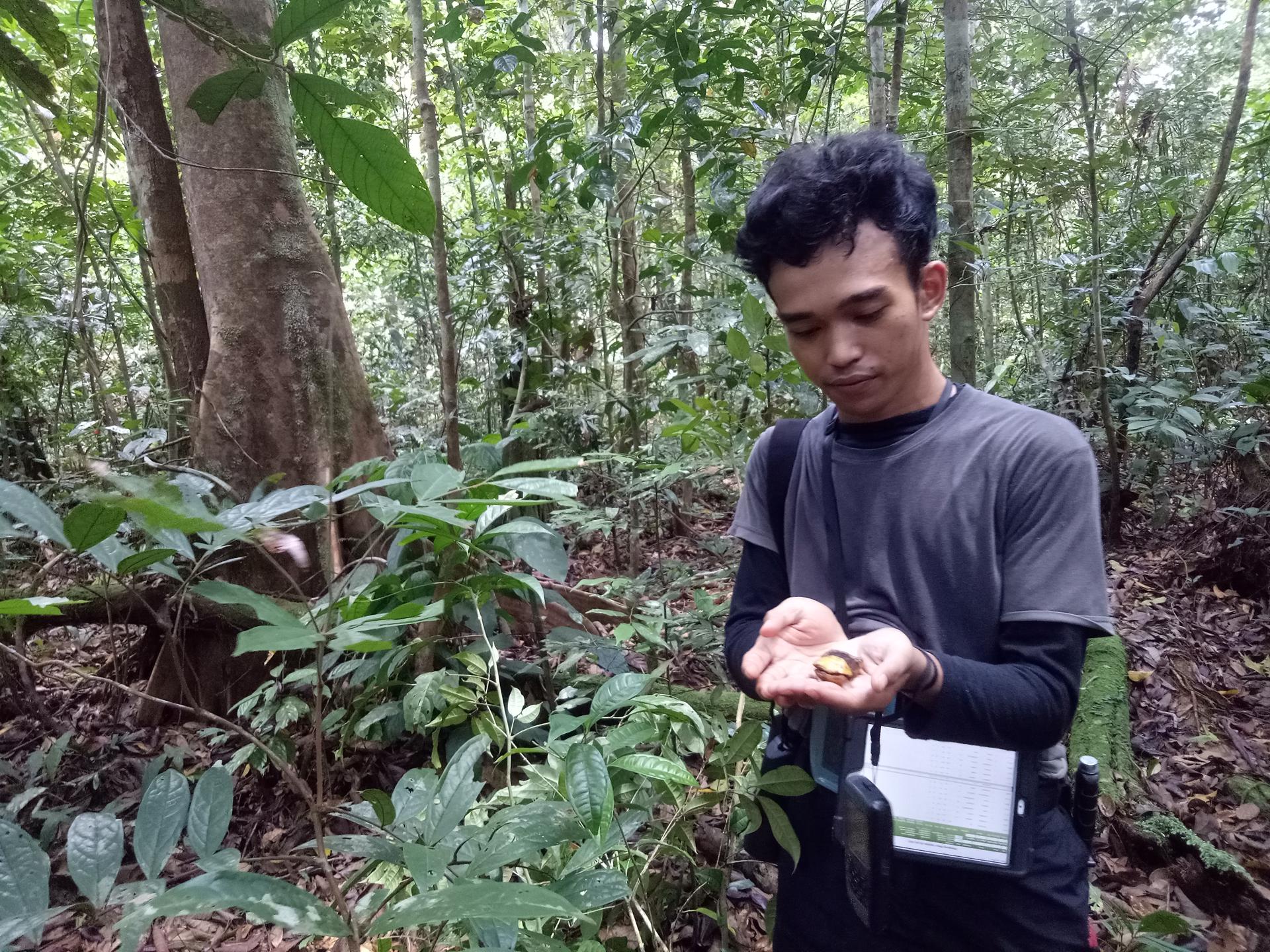
The first time I went to Cabang Panti Research Station in Gunung Palung National Park, I was with Research Manager, Ahmad Rizal, and camp maintenance/caretaker, Udin. We traveled to the forest by river, on a small motorized boat. I saw all kinds of avifauna along the river bank and flying through the sky. I also saw macaques and proboscis monkeys in trees along the river. As we entered the boundaries of the National Park area, I was presented with a phenomenon that I found to be quite unique. The river that was very dark in color changed to crystal clear in the upper reaches of the river. This happened when one river merged with another. We entered the Sungai Air Putih (white water river), which leads to the research station. Apart from the uniqueness of the river, during my time at Cabang Panti I have also observed many different habitat types which are home to orangutans.

The freshwater and peat swamp habitats that I walked through presented plant species with anchor roots and floating buttresses. On the forest floor, I saw pools of water which were very interesting and unique. In the alluvial habitat, which has a forest floor made of silt from riverbanks, I observed flowers and plant litter fall on top of the silty soil. Not too far from the alluvial habitat, I noticed a stretch of brownish sand, indicating we were entering the lowland sandstone habitat.
The next day, when I took part in a phenology survey, I saw a forest floor with white sand, which meant we were entering the kerangas (heath) habitat. While assisting with observations near the Rangkong River, I picked up several fruits known locally as “gansing” (Lithocarpus spp.) fromthe forest floor. Seeing these fruits brought back fond memories from my childhood in rural Kalimantan, when we would use these fruits as toys. Above, I heard the clear calls of hornbills breaking through the sounds of the jungle. During the night, while we stayed at the new satellite camp, we were serenaded with a variety of sounds, some of which I could identify as frogs and insects near the camp. I also saw unique plants, such as a species of durian (Durio) which bears its fruit at the base of the trunk, instead of high up on branches. I was so excited to learn more about all the habitats and flora that I witnessed during my first trip to Cabang Panti.
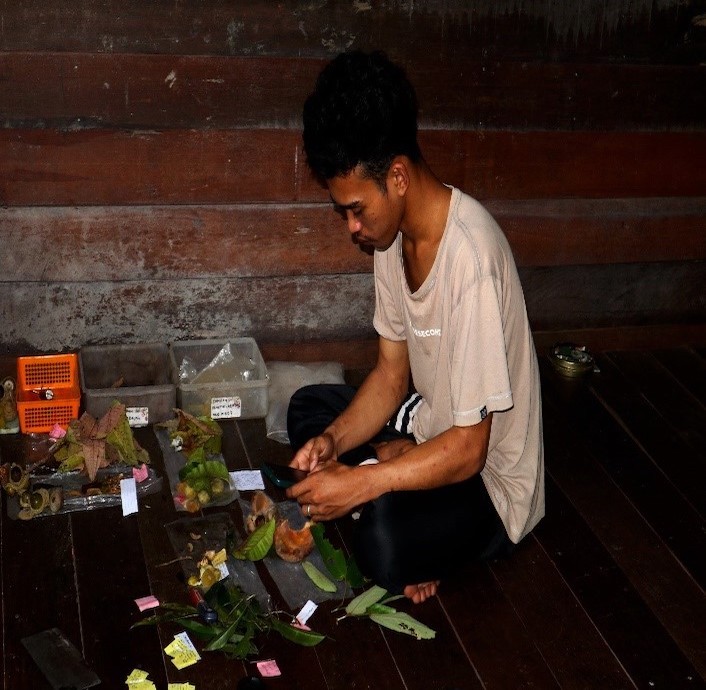
Since starting this new position, I have journeyed to Cabang Panti and the Rangkong River camp each month. Each time I walk in the forest I have a new first-time experience. There is always new biodiversity to discover. Even just the hike to get to Cabang Panti presents a huge amount of beautiful biodiversity. At the very end of 2022, I saw orangutans in Gunung Palung National Park for the first time. I was an extraordinary experience. I participated in an orangutan follow at Cabang Panti, shadowing the field assistants as they collected behavioral data. I helped to identify various fruits that the orangutans were eating. I was also excited to see, for the very first time, leftover fruits and seeds that were left behind by orangutans! It was very interesting for me to see how the forest and the orangutans within it interact and have their own way of maintaining the stability of the Kalimantan tropical rainforest ecosystem.
I am very grateful to Yayasan Palung/GPOCP for giving me the opportunity to contribute as a staff member, as well as to the Gunung Palung National Park Bureau (BTN-GP) who have helped me a lot and allowed me to assist with phenology in Gunung Palung National Park.
Management of Cabang Panti Research Station is conducted by the Gunung Palung National Park Office (BTN-GP) in collaboration with GPOCP/YP. Scientific research is carried out in conjunction with the Universitas Nasional (UNAS) and Boston University.
